The balloon whisk is best for thinner liquids
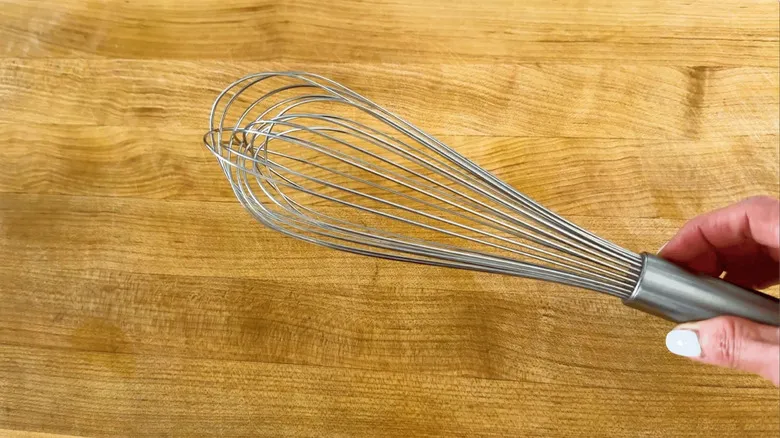
Chances are, you already have a balloon whisk in your kitchen. This versatile tool features a rounded shape with flexible, interlocking wires, making it a must-have for any baker. Its large, bulbous design is perfect for mixing in curved bowls and works effectively with both wet and dry ingredients. "It's designed to incorporate a lot of air into your mixtures," explains Hahn as she combines cream and powdered sugar. She suggests using it for whipping cream, egg whites, soufflés, and light pancake batters, such as the airy Japanese soufflé pancakes that have taken social media by storm in recent years. While balloon whisks are widely available, it's advisable to look for a high-quality whisk that won't fall apart or rust easily.
The stiffer French whisk is great for thick batters
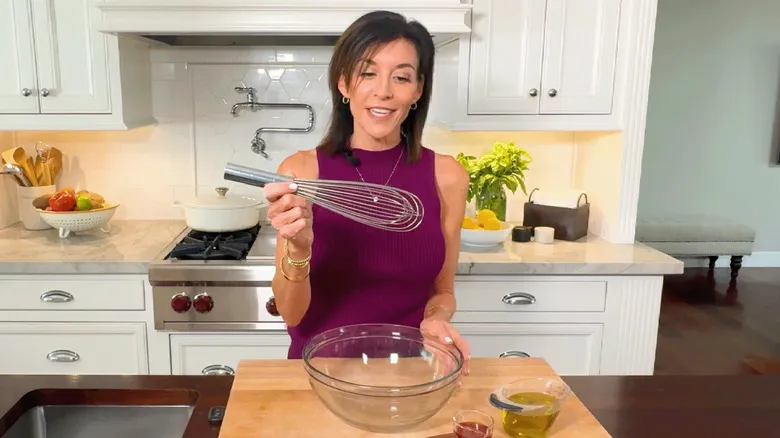
The French whisk, also known as a French whip, is a more compact and robust alternative to the balloon whisk. Its tines are less flexible and positioned closer together, making it ideal for mixing thicker batters and puddings, as noted by Hahn. She also points out that it excels in recipes that require emulsifying ingredients, such as vinaigrettes, mayonnaise, or homemade aioli. To illustrate this, she mixes oil and red wine vinegar to create a quick dressing that remains stable.
Moreover, the French whisk's narrower and firmer design allows it to reach the edges of pots or deep-sided pans more effectively than the more pliable balloon whisk. It can even be used similarly to a spatula when preparing creamier sauces, such as béchamel or hollandaise. French whisks are available in various shapes and sizes, but they typically tend to be quite large.
Mini whisks aren't just cute
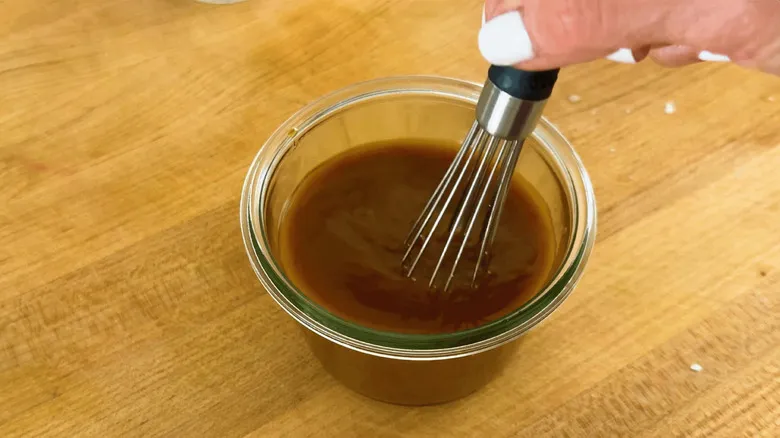
The mini balloon whisk is ideal for smaller containers where aeration or emulsification isn't necessary, meaning that vigorous whisking isn't needed. "A common error is using a whisk that's too large for the task," Hahn points out while preparing a stir-fry sauce. Essentially a smaller version of the balloon whisk, the mini whisk is specifically designed for use in smaller bowls and for recipe components that may only be prepared in half-cup or smaller quantities. It can effortlessly whip, mix, and emulsify smaller portions of nearly any recipe.
A crucial ingredient in the stir-fry recipe is a cup of cornstarch mixed with water, which serves as a thickener for the sauce. Hahn combines this mixture in a separate measuring cup-sized dish. In both instances, she is working with a small amount of ingredients in a limited space, making the mini whisk the most efficient tool and minimizing mess. "This is the perfect size for mixing this stir-fry sauce in this jar," she remarks.
Similarly, if you're whisking one or two eggs in a cup or preparing a single serving of tahini or tzatziki, the mini whisk performs exceptionally well. There are various sizes available (some mini whisks are almost as large as smaller standard whisks), but for small bowls and measuring cups, six-inch versions with relatively stiff wires are particularly effective.
Silicone whisks are a safe choice for nonstick surfaces
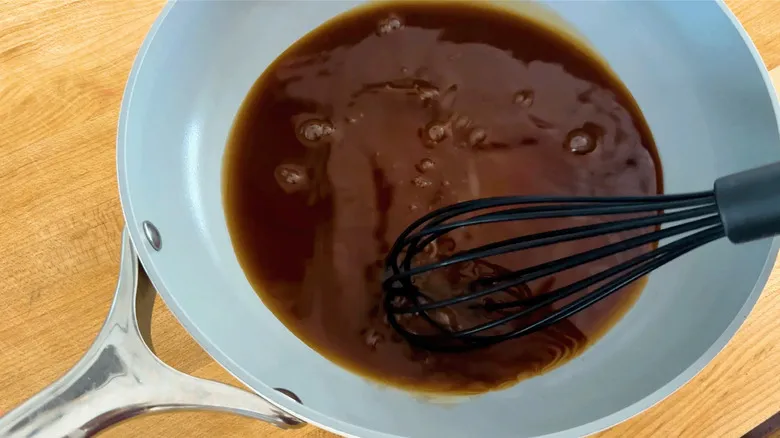
Silicone whisks are ideal for use with non-stick cookware that you want to keep in good condition. According to Hahn, a common mistake is using metal whisks, which can scratch and damage coated pans. When adding a cornstarch slurry to her stir fry sauce for thickening (one of the many uses for cornstarch), Hahn points out that the whisk is particularly effective in this scenario. In fact, the whisk is often superior to a spatula or wooden spoon for blending liquid ingredients.
It's important to note that while silicone whisks are frequently designed in a balloon whisk shape, the term "silicone whisk" refers to the protective coating on the wires rather than the whisk's design or size. You can find silicone-coated versions of nearly any whisk style. Additionally, the coating provides the benefit of being quieter than stainless steel when mixing with metal or glass.
Whisking side-to-side works best

The risk of making mistakes goes beyond just selecting the right tool; it also involves how you utilize those tools. If you've been vigorously whipping your cream in a circular motion while tilting the bowl, you might be in for an unexpected outcome. According to Hahn, a gentle, steady side-to-side motion is actually the most effective technique.
"You want to use a side-to-side motion, primarily using your wrist," she clarifies. This method differs from stirring in circles, like you would when cooking soup, or rapidly whipping with the bowl tilted. "The side-to-side technique is the most efficient," Hahn emphasizes. By combining this motion with a balloon whisk, you should achieve stiff peaks in your whipped cream within just a few minutes.
Whisking side-to-side generates a better shear force, creating layers of liquid that collide to form long air channels, which helps to better combine and aerate the ingredients. This motion is also easier to maintain consistently without tiring compared to the circular whipping technique against the side of a bowl.
Regardless of your whisking method, Hahn advises using the largest bowl possible. This helps prevent spills and makes the process less cumbersome. Whisking in a spacious bowl is especially beneficial for aerating (like when making whipped cream), as it provides ample room to work vigorously and allows the cream or batter to expand as it incorporates air. By selecting the right whisk, keeping your wrist movements precise, and opting for an appropriate bowl, you'll be well on your way to achieving perfectly whisked ingredients every time.
Recommended
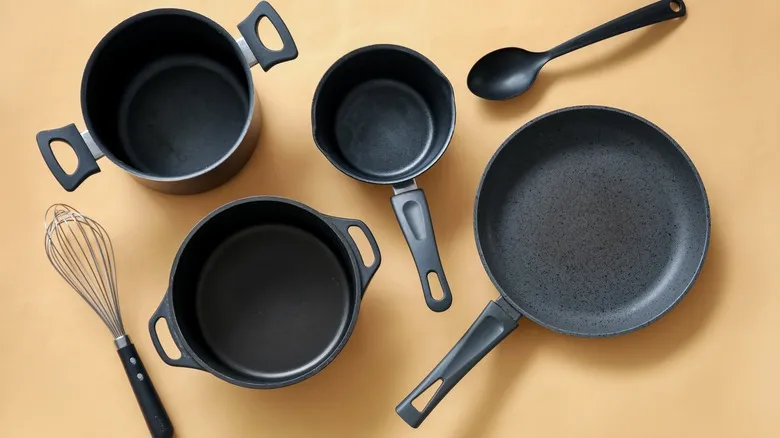
Are Skillets And Frying Pans The Same Thing?

De-Stem Your Herbs In A Flash With The Box Grater Hack
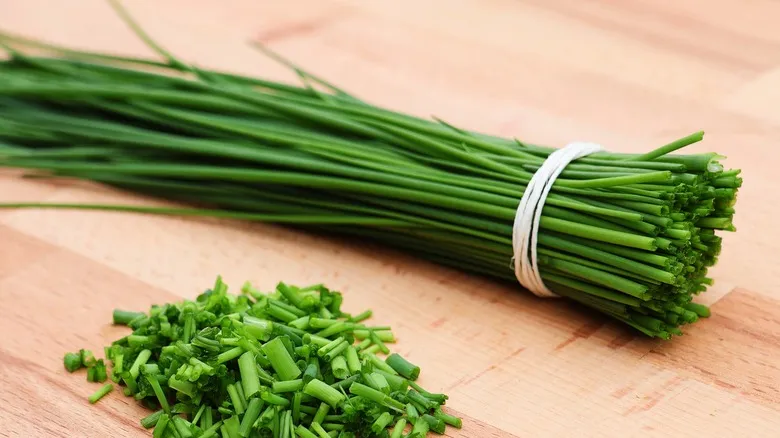
You're Probably Slicing Your Chives Wrong
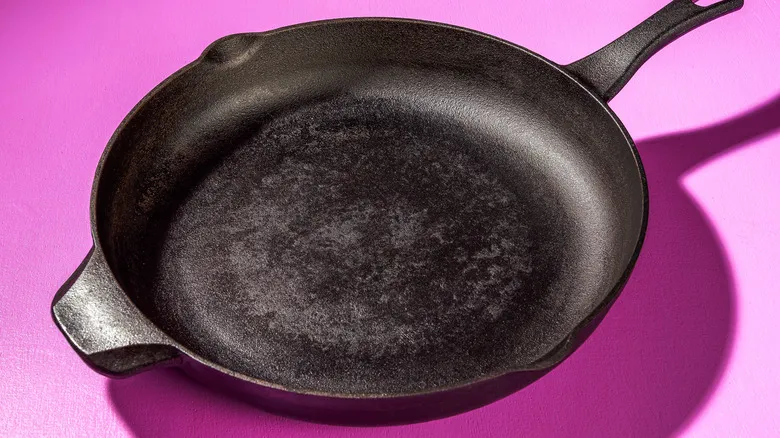
Why Acidic Foods Are A No-Go For Cast Iron
Next up
